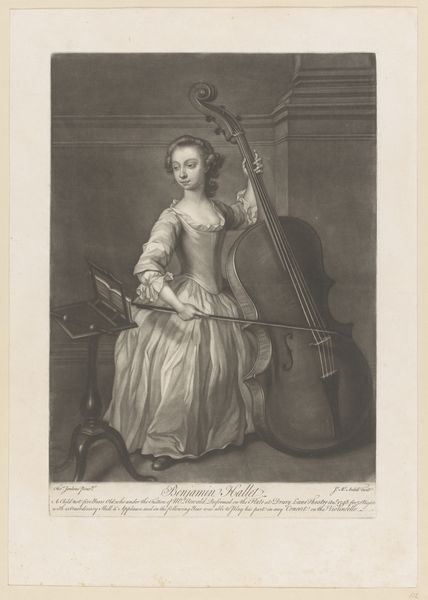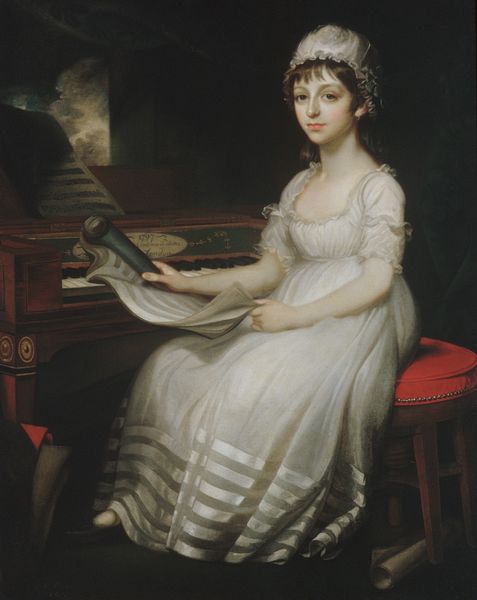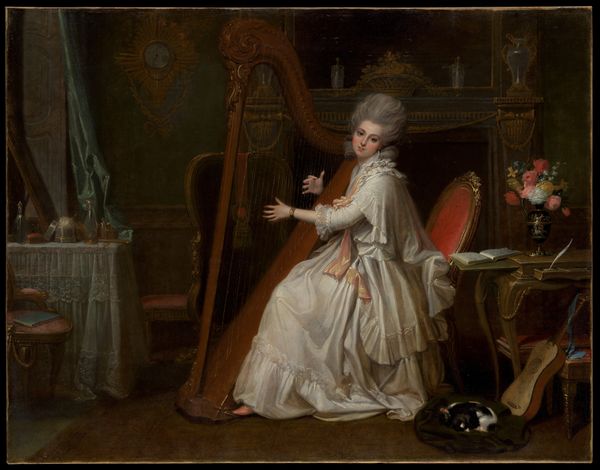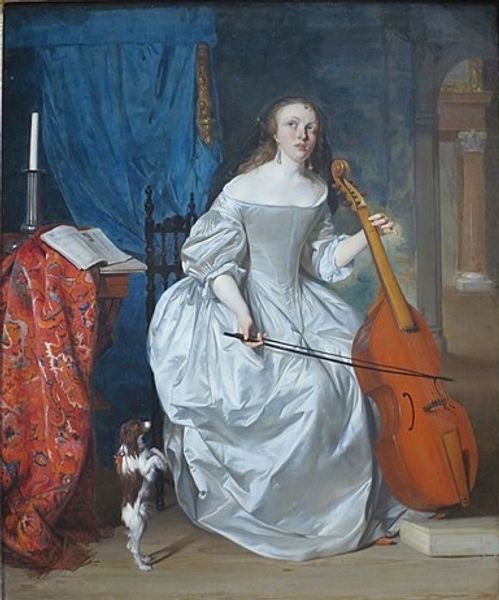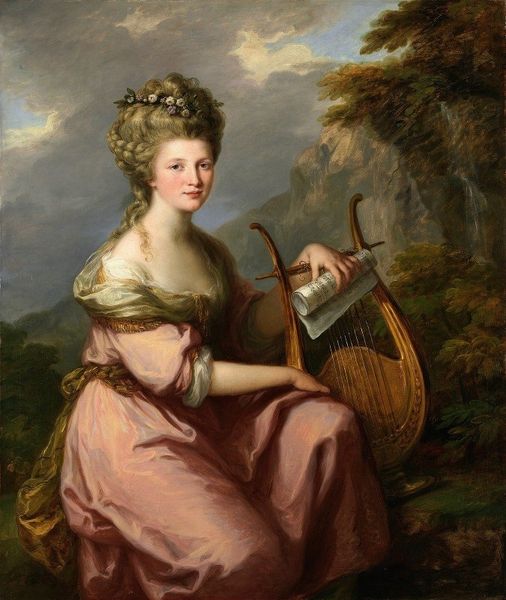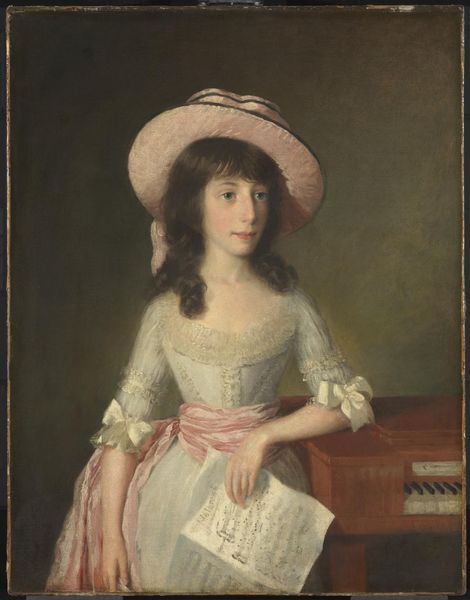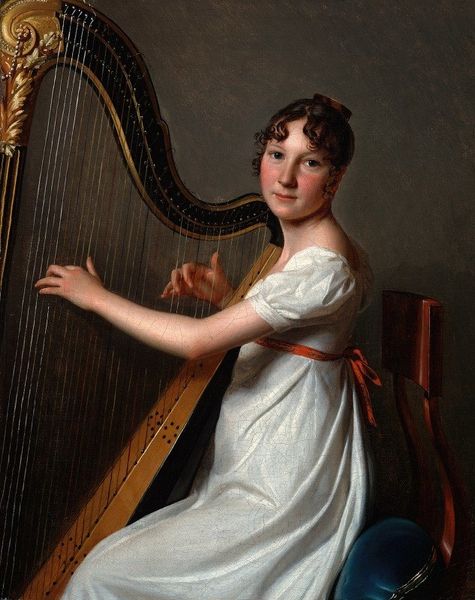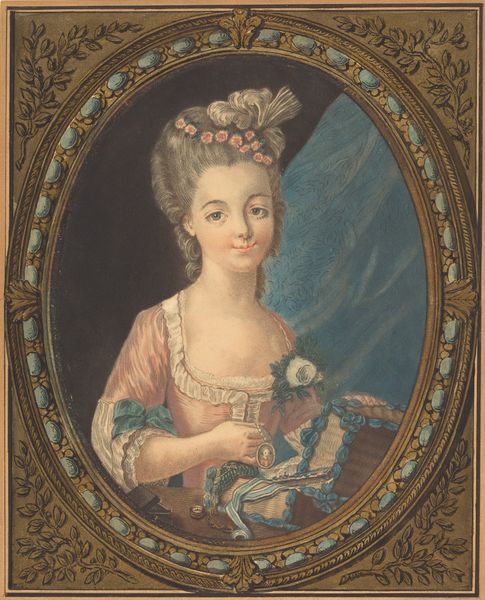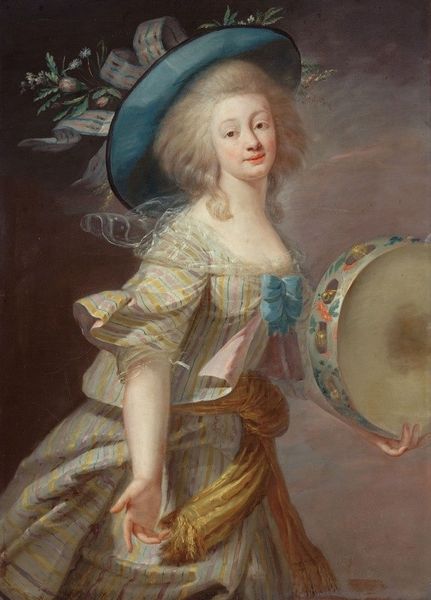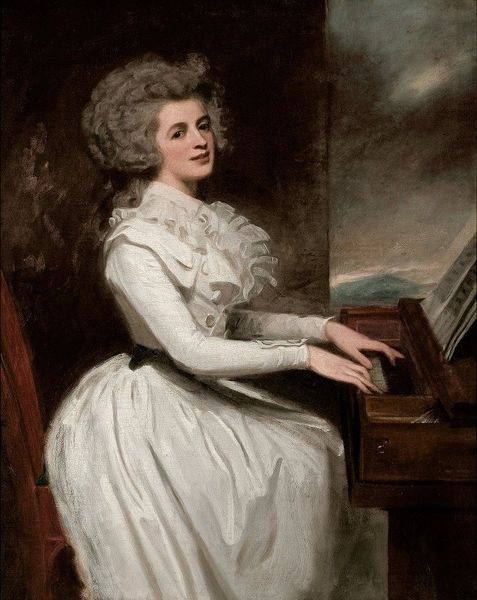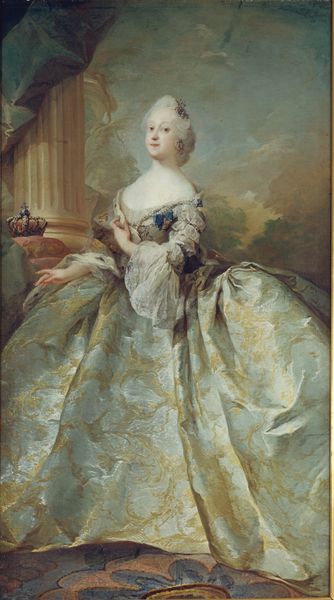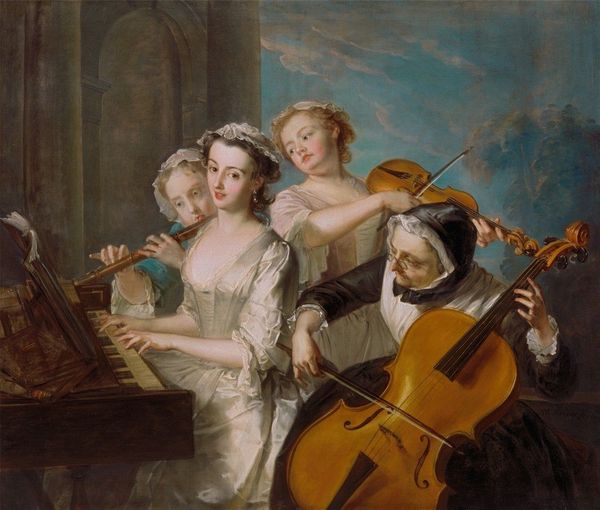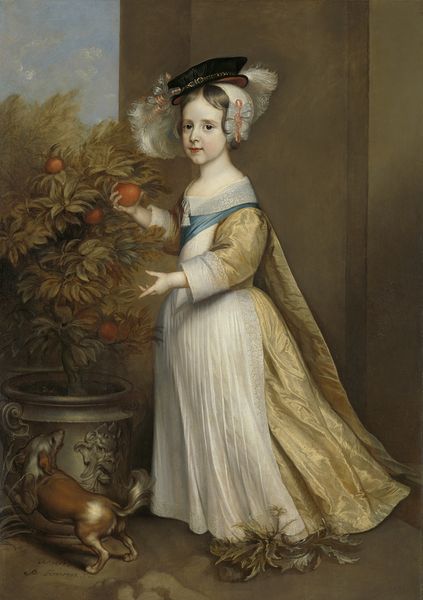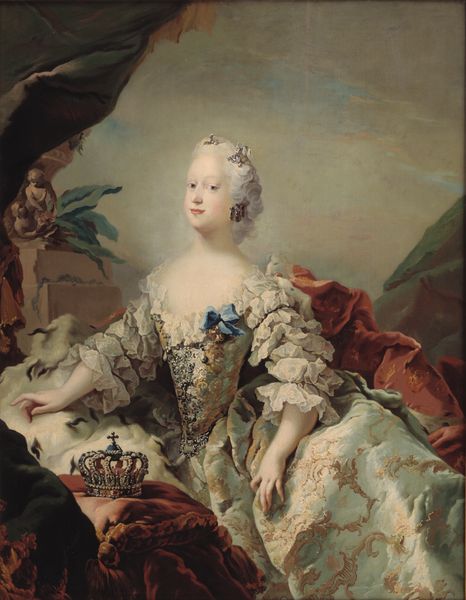
painting, oil-paint
#
portrait
#
self-portrait
#
painting
#
oil-paint
#
historical fashion
#
classicism
#
romanticism
#
genre-painting
#
academic-art
Dimensions: 76 x 50 3/4 in. (193 x 128.9 cm)
Copyright: Public Domain
Curator: Here we have Rose Adélaïde Ducreux's "Self-Portrait with a Harp," painted in 1791. It's currently housed here at the Metropolitan Museum of Art. Editor: My initial reaction is one of poised serenity. There's a lightness to it, almost as if we've caught her in a fleeting, musical moment. Curator: Absolutely. Now, Ducreux was more than just an artist; she was a court painter during a turbulent era in France. Her position as a woman artist in the late 18th century, navigating a male-dominated art world and a society on the brink of revolution, adds a layer of complexity to this piece. The choice to depict herself with a harp isn't just about artistic skill, is it? Editor: Precisely. Music, particularly the harp, was associated with refinement and sensibility, both valued feminine qualities at the time. However, depicting herself as an artist, with this direct gaze and assured posture, challenges conventional notions of female passivity. It's a fascinating assertion of identity within restrictive social norms. I see it as pushing for representation. Curator: And that push plays out against the backdrop of shifting social structures. The French Revolution was looming, and art was increasingly seen as a tool for political and social commentary. Did Ducreux's work play into that changing role of art, do you think? The striped fabric, a sort of fashionable prison for women then— is that significant? Editor: Certainly. Though she avoids overt political statements, by showcasing her status and her musical accomplishments, it speaks to access and privilege. It might be an attempt to position herself within a narrative of artistic merit, distancing herself from the excesses of the aristocracy as times grew precarious. Curator: It is striking how she navigates the visual rhetoric. Look at how the architectural pillar, the drapery, the way she composes herself in the image: her style seems an homage to classicism with elements of romanticism to come, foreshadowing future approaches to art. What would have this have communicated at the time? Editor: Absolutely. This is an act of self-fashioning; of using the language of visual culture to assert a sense of belonging and purpose during the transition. What remains timeless in Ducreux's artwork is her demonstration of personhood, navigating public opinion, gender expectation, and artistic authority during monumental changes to cultural institutions. Curator: Yes, seeing art as part of broader discussions about societal identity and political issues encourages fresh approaches to old and upcoming artworks.
Comments
No comments
Be the first to comment and join the conversation on the ultimate creative platform.
